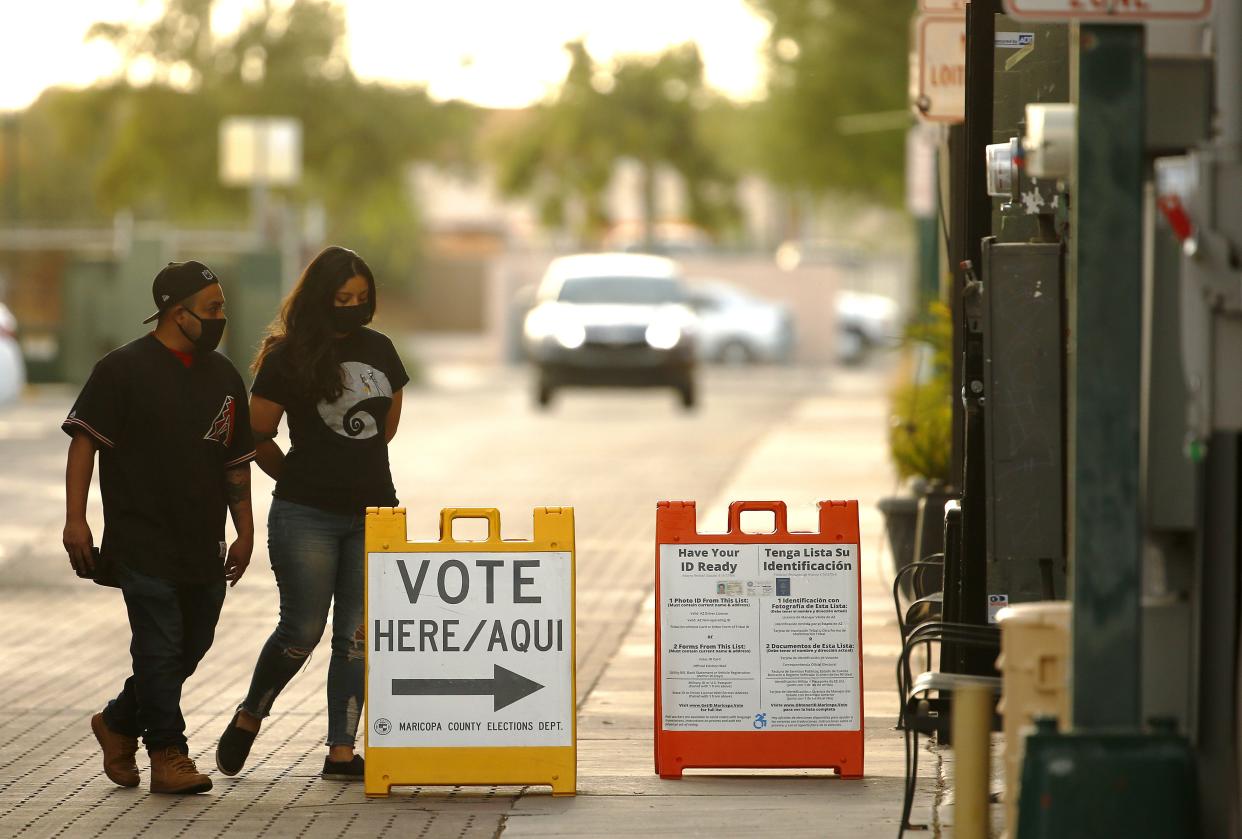Hispanics don't just live in a few voting districts. When will politicians learn?

We’re just a few weeks into 2022, but already key political players are looking toward the midterms.
Politicians are jockeying to get themselves in the best possible position, and a big part of that involves redrawing congressional district boundaries. These processes are underway or recently wrapped up in several states, and many have drawn criticism for short-changing Hispanic voters.
Redistricting fights are expected when politicians draw their own boundaries, but even states with independent redistricting commissions, like Arizona, have not been free from controversy.
As The Arizona Republic reported, growth among the state’s Hispanic population may not lead to greater representation. The commission initially failed to provide materials in Spanish. The commission’s chair admitted they had to effectively pack minority districts with Democrats.
Since the final map’s approval, commission members have devolved into partisan finger-pointing.
Hispanic voices cannot be limited to a few districts
Fair electoral maps are essential to ensuring every American citizen can participate in our democracy. Nobody should be allowed to violate our voting rights.
But making sure we pack enough voters into “Hispanic districts” cannot simply be the end-all, be-all of politicians’ engagement with the Latino community.
There are just too many of us.
Hispanics make up about 20% of the American population – the second-largest ethnic group in what is quickly becoming a majority-minority country. Arizona has the fifth-largest Hispanic population of all the states, at just over 30%.
Our voice cannot be limited to districts where we are in the majority. Shunting us into “Hispanic districts” isn’t enough. We’re in your district, too, and if recent census data is any indication, there will only be more of us there as time goes on.
Hispanics are everywhere, so you’d better start making an effort to meet us everywhere – not just where you would like us to be.
Latinos are increasingly swing voters, which is tough
This could present a problem for both parties, as Hispanics are increasingly swing voters. Republicans might be afraid of having too many Latinos in their district because of our traditional support for Democrats. But Democrats might look at their party’s dwindling support among Hispanics in the 2020 election and start to feel a bit nervous.
Because Hispanics are less of a reliable voting bloc for either party, maybe neither party is thrilled to have more of us in a contested district. This is a somewhat cynical theory, but this is politics, after all.
Regardless of what’s behind the shuffling of Hispanic voters, the path forward is clear: a two-way street of increased political engagement with and among Latino communities everywhere. Every representative must make an effort to get to know the Hispanic communities in their districts – no matter their size.
You will find that the same kitchen-table issues, like jobs and the economy, animate Hispanic voters as they do most other Americans – not, as Democrats recently discovered, whether you call us “Latinx” or not. We may not agree with everything you say, but meaningful conversation is key.
Reaching us will take a lot more effort than that
Simultaneously, more Hispanics need to run for office, even in districts that don’t have a large Hispanic population. We are 20% of the population yet make up only 9% of the U.S. House of Representatives.
Creating more “Hispanic districts” may be an easy way to elect Hispanic representatives, but seeing more Hispanic candidates run for office in communities nationwide – working to earn the support not only of their fellow Hispanics but African Americans, whites, Asian Americans and everyone else – will help bring our population increasingly into the political mainstream.
That is how a stronger Arizona and stronger country is built.
A Latino becomes eligible to vote every 30 seconds. Politicians should remember that the median age among the Hispanic population is 30 – which means today’s young Latinos could be voting for you (or not) for a long time.
If you want to simply carve out a few Hispanic districts and call it a day, you do so at your own risk.
Javier Palomarez is the president and CEO of the United States Hispanic Business Council. On Twitter: @JPalomarez.
This article originally appeared on Arizona Republic: Hispanics need more voter outreach than either party is giving them

